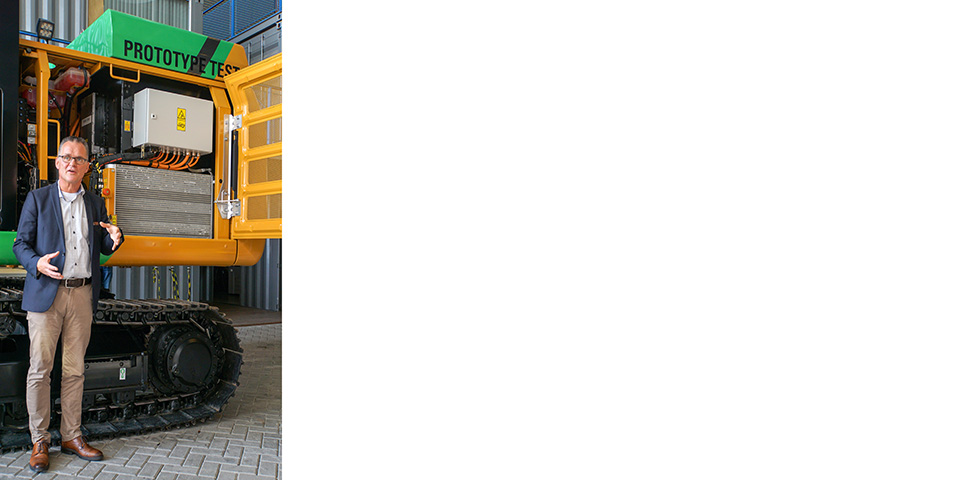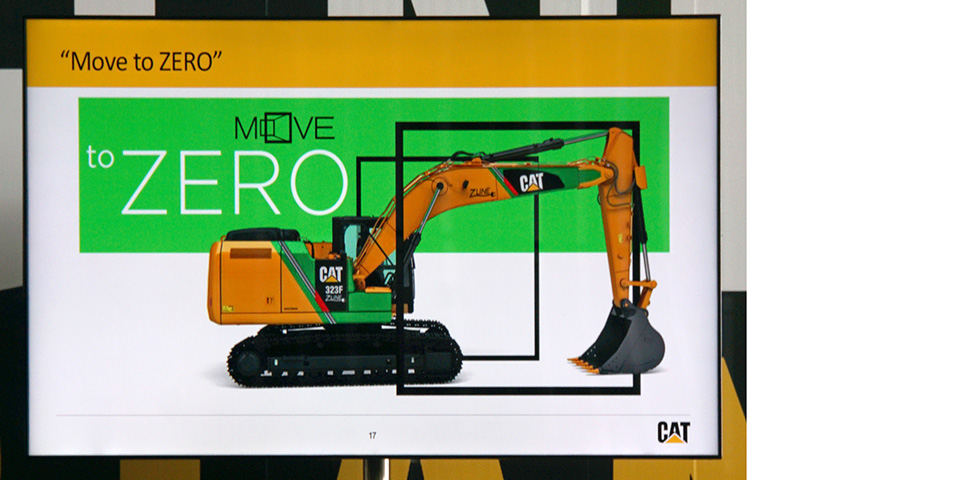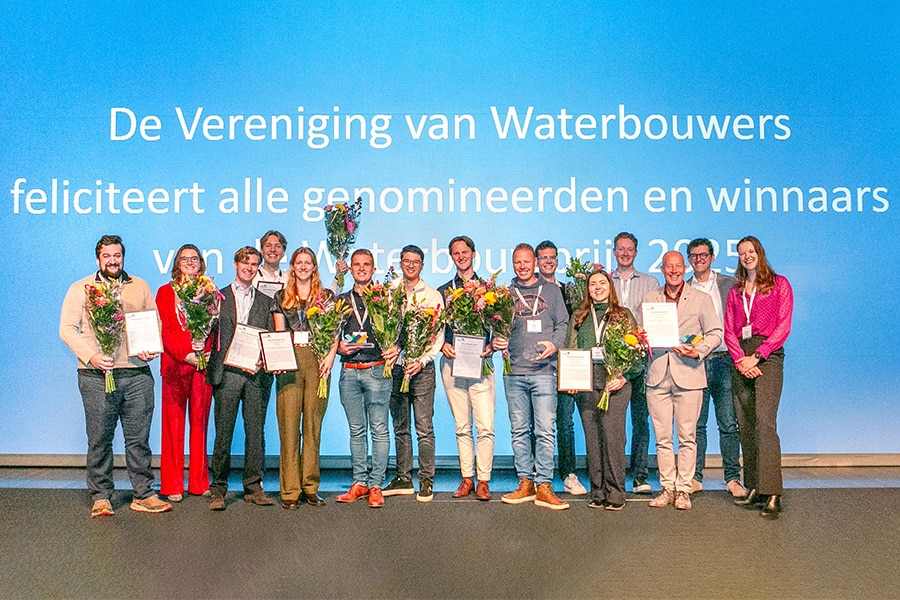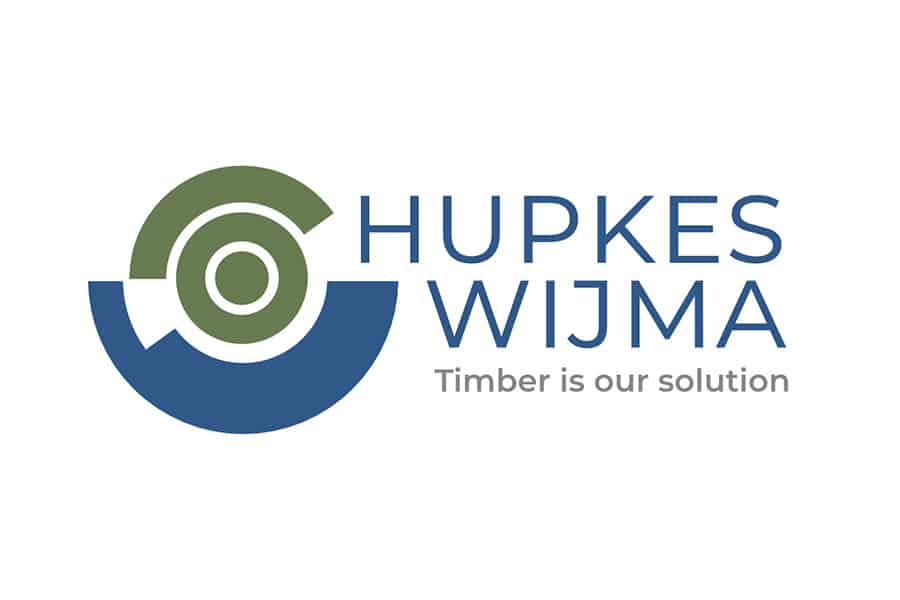
First all-electric big Cat shown
Electric driving by car should become standard, but whether it will work with construction equipment? There are already fully electric mini- and midi-excavators, compact wheel loaders, vans, telehandlers and medium-sized trucks, but it is a different story with the larger machines and trucks. These require power and endurance, and there is still not enough of that in the available batteries.
Almere-based Pon Equipment has demonstrated to dealers, customers and trade press the first all-electric Caterpillar. This is a converted 25-ton crawler excavator of the Cat 323F type, which has been given the addition Z-line after electrification.
Commendable initiative
That Caterpillar, in cooperation with Pon Equipment, is now trying it out with a tracked excavator weighing around 25 tons is certainly to be commended. During a "sneak preview" at the Pon facility in Almere, the public actually saw the 323F Z-line in action and it has to be said, it did not disappoint. The machine runs with the same ease as the diesel version and those who were allowed to try it out on the spot were full of praise. That bodes well for the future, as the 323 from the new F-Series Next Gen excavators is the first in a growing line of machines to be electrified. The Z in Z-line, by the way, stands for "Zero Emission.
Three and a half tons of batteries makes it an expensive one
The 323F Z-line was developed in Norway, at Pon in Oslo. The prototype used for practical testing that was brought to Almere looks like an ordinary excavator from the outside. The only change is under the hood, where the diesel engine and exhaust system have been replaced by a pair of electric motors and roughly about 3.5 tons of batteries. These are large and powerful Li-ion batteries from the marine sector, and they caused the price of the electric version to skyrocket to a whopping €620,000. According to Pon Equipment, that is roughly three times the price currently paid for the diesel version.

Erik Sollerud shows what's under the hood now.
Lower costs
According to the very closely involved Erik Sollerud, managing director of Pon Equipment Norway, the high purchase cost should be partly recouped by the substantially lower fuel costs and lower maintenance. "Suppose you run 10,000 hours with the electric 323F, you quickly save about €120,000 in diesel." He expects the benefit to increase even more as the price difference between diesel fuel and electric power increases. The latter is well in line with (political) expectations.
Another part of the payback model is winning tenders from competitors for large contracts within environmental zones etc.

The motto is clear: towards zero emissions.
Socket provides For a minimum of five hours of operational time
Charging the batteries of the 323F Z-line takes several hours - preferably overnight - under normal conditions (230 volts). This is sufficient for 5 to 7 hours of continuous operation. Fast charging is also possible (400 or 1000 volts) and then half an hour of lunchtime is sufficient for the rest of the day.
To accommodate the large and heavy batteries, not only was the diesel engine removed, but the 6,000 kg ballast block was replaced with a steel version that weighs less than half and takes up much less space.
Explore further
As mentioned, from the outside it looks no different from the diesel version and is missing only the exhaust pipe and air filter. Green stickers indicate that it is an eco-version. And of course, the first versions will be clearly labeled Z-line. Five are currently being built and more are in the pipeline. Pon Equipment and Caterpillar are also exploring which other machines can be made electric fairly soon. These include other Next Gen excavators, the compact wheel loaders, preferably also a tire excavator and, of course, the smaller excavators. Because for all machines that need to start working in cities, tunnels or inside buildings, an electric drive is the most obvious option.




